The Costa Levante bird, nature and culture tour
Prologue:
The day before we embarked on our trip, I showed the area around us to our guests. We visited a nice mountain range to the north, before arriving at El Hondo, where we saw a lot of interesting things. The marbled duck marching around right in front of us was particularly amusing.
After we took a slight detour to see a spectacularly colourful bird and the ruins of an old church, I got such amazing views of the bird that I decided that my presence there would not be necessary anymore this summer.
We then drove down to Torrevieja to see the Laguna Salada de Torrevieja, a large salt lake, the concentration of which approaches that of the Dead Sea, and the waters of which turned rosy-pink in the summer. The landscape was amazing. I looked over at where I was hunting Montagu's harriers back in April and remembered how completely normal the waters looked back then.
Finally, we went to our lighthouse as the sun set, and I showed them the reason I cycled out here at night- a calling nightjar in the distance.
Day 1: Alicante- Castellon de la Plana
Today saw the start of our trip. On our first day, we would cover the biggest distance and see the least interesting things. We first made a stop at Castell de Xativa, and explored there. Despite the temperature reaching 39 degrees celsius, I felt oddly comfortable climbing around on the mountain.
We then decided to go to the Albufera de Valencia. On the way, I spotted a short-toed eagle pair, but when we arrived, we were all disappointed because of the searing heat by the coast. It felt like a simoom here at the Albufera. Whilst everyone else went to swim, or tried to, I tried to quickly see what I wanted, though previously we found the best area closed, which contributed to our disappointment. There were a lot of rare Audouin's gulls, before I saw it.
When I first saw it, I impulsively diagnosed 'sandwich tern'. It looked very different to the terns I had been seeing here, and matched the Sandwich tern. That is when I noticed the bright orange bill. It didn't tale me long to figure out what it was- a monstrous rarity known as the elegant tern, which breeds here, one of the only places in Europe where it does. Rubbish photos, but a tick in my head. A few asked if it could be a Caspian tern, but this is even rarer in the region and looks different. Others supported my diagnosis, but said it also resembled a lesser crested tern, which is even rarer.
We then quickly left, and recovered in the car whilst we drove to Valencia. We saw a couple of beautiful churches, before driving past Sagunto to our destination for the night.
Day 2: Castellon de la Plana- Mora d'Ebre
We stayed in semi-Spartan conditions for the night, without any internet. But I did sleep right under the air conditioner. We quickly packed up and drove off to our next destination, which I had chosen specifically for everyone else: the ruins of an ancient Iberian settlement. Nearby was something interesting for me as well- an olive grove with some olives over a thousand years old: Puig de la Misericordia. When we got here, we first looked at the ruins of the settlement. It was just a pile of bricks in my opinion, but it did get the others excited, and I got excited just by thinking about its age. There were bee-eaters nearby, and I ended up missing all 4 of them when they flew overhead.
We then decided to check the olives next, and I quickly found an ancient one. According to the sign nearby, it was 1,000 years old or perhaps even older, supported by its gnarly appearance. It, of course, was much smaller and less weathered than the near-2,000 year old olive tree I saw in Zakynthos in 2016, but still, very impressive, for sure.
As we left, I spotted an even older one nearby. Our next destination was the Tinenca de Benifassa natural park, where I wanted to show everyone a cave full of ancient petroglyphs. And of course, along the way, look out for birds of prey, which lived there in large numbers and included a couple of young bearded vultures brought there as part of a reintroduction project.
The scenery was fantastic. We missed a couple of birds of prey, including a couple of long-tailed ones which got me riled up. We stopped at a reservoir next. Whilst everyone else went swimming, I started pacing the bridge, back and forth, like a beast in a cage, and lunging at anything that soared with my optics. Everything was, however, too distant, and everything I saw I thought to be griffon vultures. Only much later did I find a young bearded vulture, way off in the distance, on my photos, and even then I'm not 100% certain. A little upset that everything was so distant, I turned my attention to the lake. The fish there were much more accommodating and also enormous.
When everyone was finished, we drove off, but did not get very far when I spotted two large, beautiful birds of prey flying around nearby. We stopped to take a look.
It was a pair of short-toed eagles. This is the most common large eagle in Spain, but even then, it is becoming increasingly rare, wary and hard to find. Especially for me, because my locations are not good for the bird. In Russia, it is known as an exceptionally wary and secretive bird of near-inaccessible raised swamps and gloomy forests, and I once wanted to brave the wilderness of the Cherusti Forest, a place where people actually got lost with lethal consequences periodically, just to see it. Last summer, I nearly visited a swamp where they lived, but decided against it because analysis of the map showed extremely dangerous terrain there. In Alicante, it is exceptionally rare and hard to find, and in the UK it doesn't breed at all. So, the photos I took deeply satisfied me. Much better than the sighting in March, and the photos look much better in other places, like Facebook, which doesn't destroy the quality as much. Anyway, after this experience, we went on, but didn't get very far when we were distracted by a group of 8 griffons soaring around nearby.
Soon after, we went to a monastery nearby. It was closed, but the scenery was incredible. Whilst everyone admired the architecture and obsessed over a cypress alley, I witnessed a peregrine falcon fall like lightning out of the skies, and despite its immense speed actually managed to take a photo of it, with a lot of griffons soaring in the distance.
As we returned, we tried to visit the cave, but it was closed and the way was blocked by a truck. I never did manage to figure out why this was done, and made a mental promise to find some petroglyphs for them tomorrow. After the park, we drove to Mora d'Ebre, passed a castle which got everyone excited, and went to bed.
Day 3: Mora d'Ebre- Barcelona
Today I had been planning very well. Upset that no-one saw any petroglyphs, I was determined to search on the internet until I found something. I found two caves, and checked they were open. A fence guarding one of them made me smile suspiciously. As we ate and set off, we started with the castle. Castell de Miravet, the ancient home of the Templars. Whilst everyone stared at it, I began birdwatching, immediately spotting a short-toed eagle in the distance.
We entered the castle, and explored, though I spent most of my time overlooking the Ebro river and trying to find the golden orioles singing in the poplars near the lake. I never did find them, but then did see a black kite soaring at exceptionally close range nearby. We were also struck by the chapel of the Templars, with its amazing aura.
After spending a couple of happy hours here, we set off towards the petroglyphs. We found the area easily, and set off on a pleasant stroll through the spectacular scenery. I kept an eye out for eagles or vultures, but did not see any. I reached the cave, and came face-to-face with the petroglyphs. Whilst everyone else caught up to me and asked me what I was doing behind the fence, I was busy taking photographs.
These petroglyphs at Cabrafeixet were drawn on a cave which was used for at least 35,000 years. The main graphic drawing appeared to show a hunting scene, whilst the other had an exceptionally detailed drawing of a deer head. Everyone else got a good but distant look, and so soon we set out towards Barcelona. After the petroglyphs, all I could think about was tomorrow.
Day 4: Barcelona- Pyrenees
Today was the day I had been waiting for, one which I was most excited about, by far. Because today, whilst showing everyone the views and hoping that certain large ground squirrels would entertain them, I would come face to face with the bearded vulture.
The Bearded Vulture is a beautiful and majestic bird of prey which, despite its looks, lives on the rather ignoble diet of bones. In our region, the best place to look for it are the Pyrenees. I consider this raptor the most beautiful bird of prey in the world, and ever since I started birdwatching in 2016 it became my dream to one day see this massive vulture for real. I looked out for it in the Sayan mountains in 2017, and saw nothing. It is very rare, particularly in Europe.
I for a long time could only dream about seeing this huge bird, expecting to get only distant views of such a rarity. Until I finally had an opportunity to go up to the Pyrenees to look for them. I picked out a place where they were seen often, set in spectacular scenery, and we embarked on our visit.
The forecast, however, made me mad, because it said there was a 100% chance of severe thunderstorms for the entire day. But we had no choice, because we had already rented a room there. Besides, I was looking at the weather radar, and as we got closer I became more and more convinced the forecast would turn out to be ridiculously wrong. As a result, when we stopped to eat in Baga, my forecast turned out to be superior over to the Weather channel: the thunderstorm receded obligingly, and the sun beat down on the mountains. The forecast continued to insist storms would break out as we ascended. I kept an eye on the clouds and radar, and the forecast only amused me. Despite this, I was ready to request a descent and a return to Baga at any second.
I don't hate storms- I love them. They excite me, and often make me intensely hyperactive. But I knew that being on a mountain during that wouldn't just not give me the vulture views, but would also be extremely dangerous. So I watched it recede with a smile, keeping an eye out for any other cells. None materialised. Despite this, as we began the ascent, our way was blocked for a full minute by a defiant salamander crawling at a snail's pace across the road.
The views as we ascended the mountain were incredible, and on one of the stops, the numerous vultures flying around were not the only thing I was photographing. There was a multitude of griffon vultures in the air, and at one point I was surprised by a golden eagle, which began soaring and flying about at close range, much closer than my encounter in the Sierra Espuna in April. However, no bearded vulture.
As we got underway and wound up the mountain further, I suddenly saw it- an unmistakeable bearded vulture way off in the distance, gliding off in the direction where we were heading now. Everyone else was impressed by the cows more, but when I saw the vulture, I lost it a bit and became intensely hyperactive, though tried to hide it. From this point onwards I did not turn off my camera at all, keeping it close by. We went that way, ascending past 2,000 meters, until we got distracted. Screams of delight filled the car.
Alpine marmots. Alpine marmots absolutely everywhere. No wonder there were so many eagles and vultures here in the mountains. We continued on, but we didn't see what I was looking for, and even worse, the road then abruptly ended. Not willing to risk the precarious track up ahead, we decided to turn back, flushing clouds of red-billed and alpine choughs along the way.
It was in the early evening when it happened. We rounded a bend, and I saw a group of 4 vultures circling a crag at exceptionally close range. One of the vultures had a strange silhouette and a spectacularly long tail. It didn't take me long to realise what this was. We stopped, and I stepped outside with my camera.
There are some sightings which just make you smile, others which you are indifferent to, others which get you excited, and, rarely, a sighting which you will remember for the rest of your life. This was the latter. It was a bearded vulture- a gigantic bird of prey with a beautiful colouration, soaring right in front of me. Even at 420mm, the vulture filled up nearly all of my photo screen, and I had difficulty keeping it fully in the view. I got even more excited when I realised that despite so many people visiting the area looking for it, nobody had encountered it at Coll de Pal for more than a month, until this happened. The photo appears out of focus here, but it really looks amazing on other websites like Facebook. When the vulture really looks like the red-eyed mafiosi farmers were so scared of in the past. It quickly disappeared, and we began the descent, me unable to stop staring at the photo on the screen of my camera.
We then quickly drove to La Molina to stay the night there. Soon after we went off to eat, and along the way, unable to take it any more and hide my excitement, I went off the track and began running around in the forests, the coniferous woodland I had missed so much. I don't want to know what I looked like from the side. I even found a few orchids- either broad-leaved helleborines or their Epipactis relatives, but these had gone over.
As we ate, I began to be increasingly suspicious of a big cloud which was creeping towards us. fortunately though, my fears did not materialise, and we simply enjoyed a walk through the forest, the dark forest, just like before, in 2019. I was breathing heavily, because the air here was just so clean and fresh. We went to bed soon after.
Day 5: Pyrenees- Barcelona
I awoke and quickly became irritated and amused at the same time. The forecast was insisting storms would pound the mountains all night, but nothing happened. As we packed up and left after a nice walk through the woods, someone in my room, who had slept above me on the bunk bed, dropped a tweezer into my shoe. I didn't notice it, and put it on. I was then wondering why my shoe felt so uncomfortable for the rest of the day. But I could not get enough of the forests.
We ascended the mountains, and stopped for a brief views, before we approached something I had been promising since yesterday evening: the big waterfalls at Fonts de Llobregat. We immediately set off. Photos speak louder than words, and I wasn't doing much other than taking pictures, even crossing the guardrail to get closer, holding onto a tree or ledge as I did so. One particular approach, near a violent chute, was particularly hairy, so I kept well clear of the drop, held onto a root, and extended my arm until my phone stared down into the maelstrom.
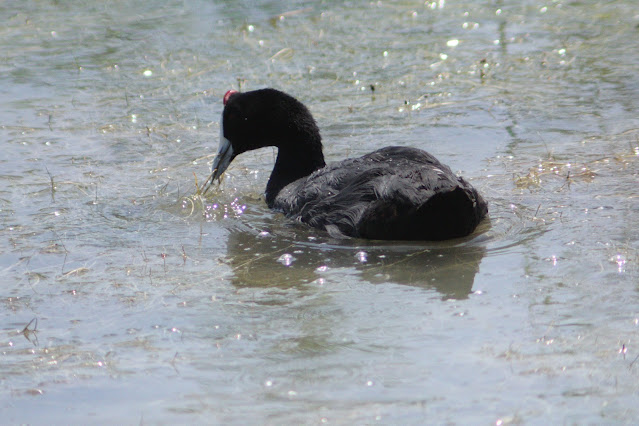

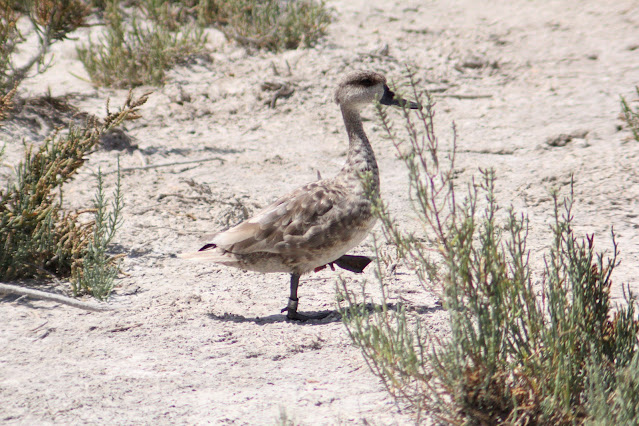






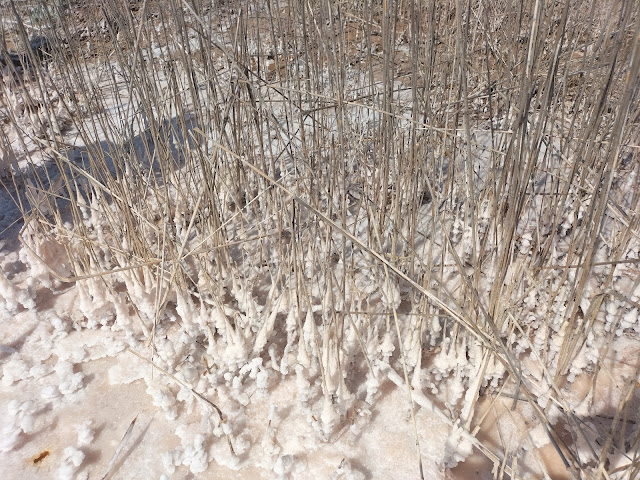



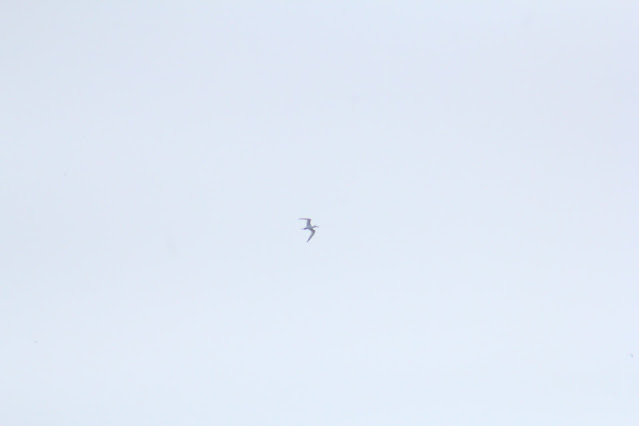
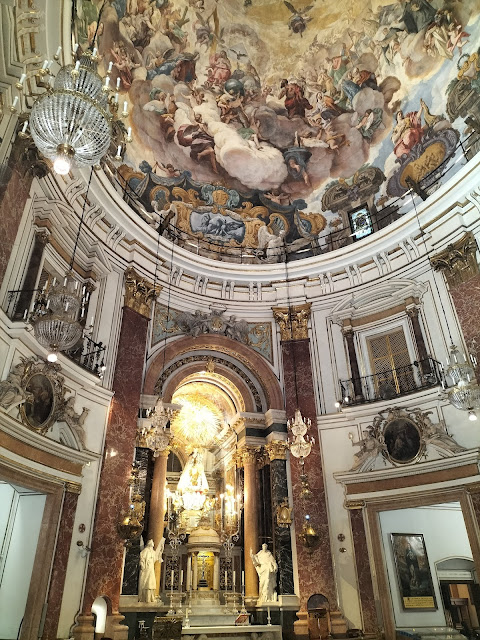















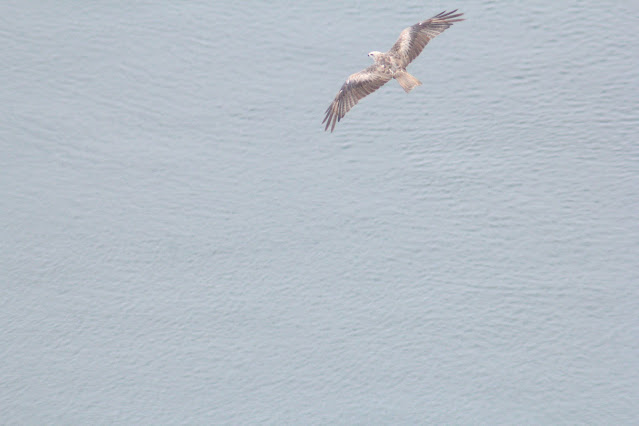
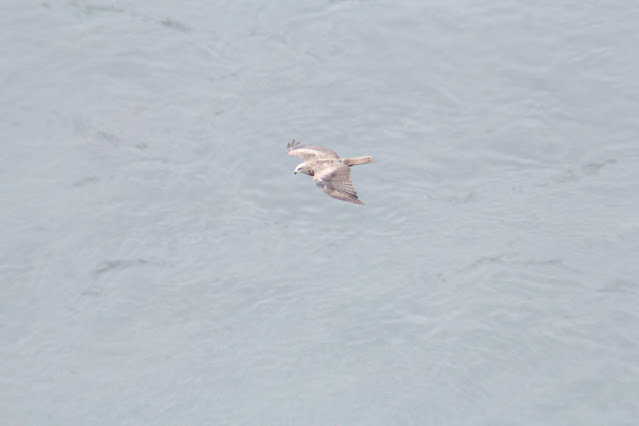

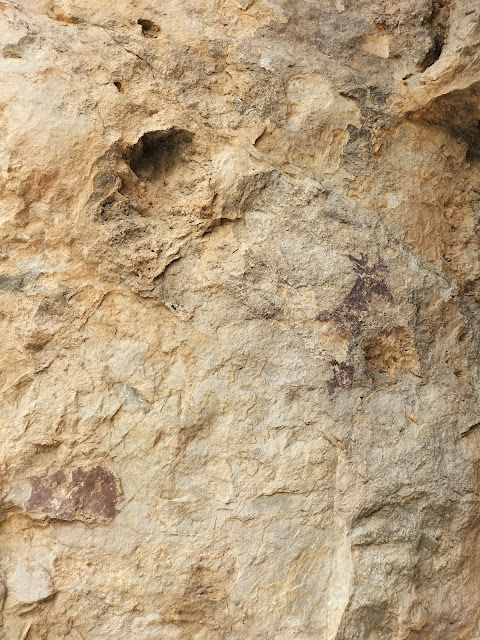































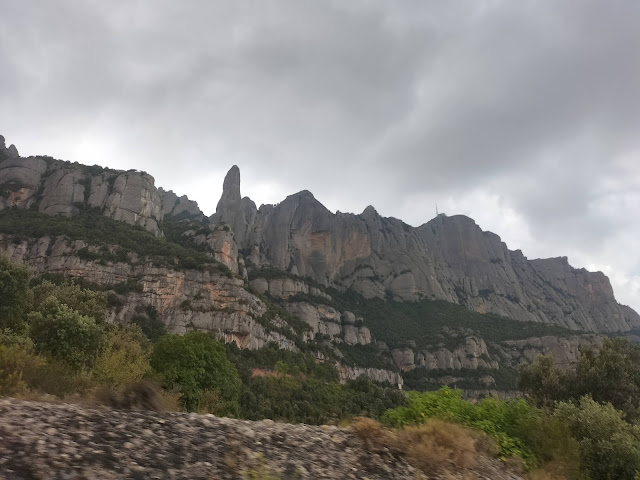
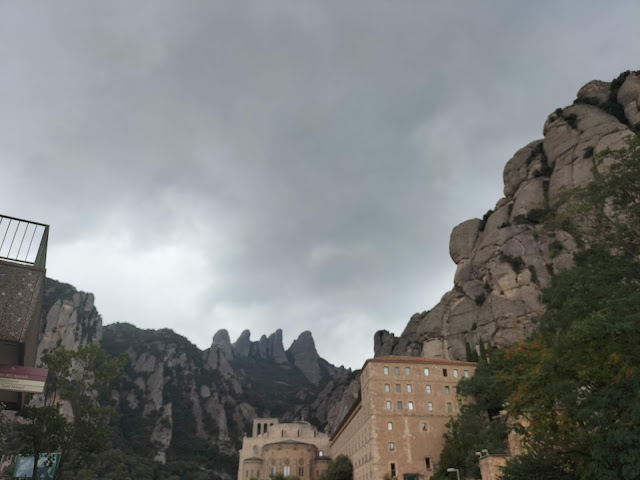











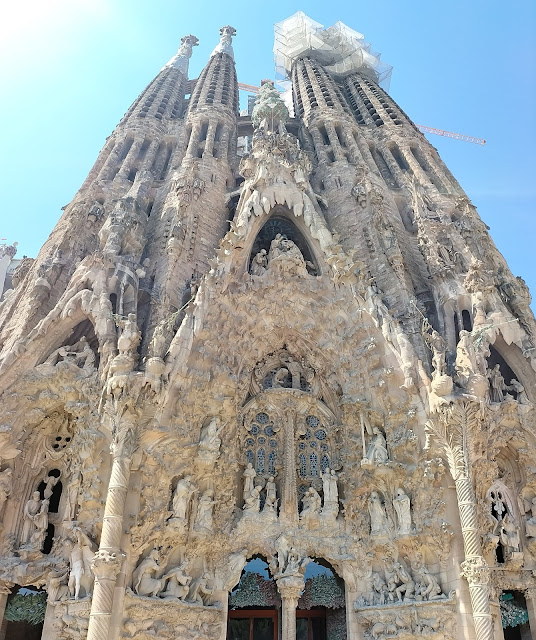








Comments
Post a Comment